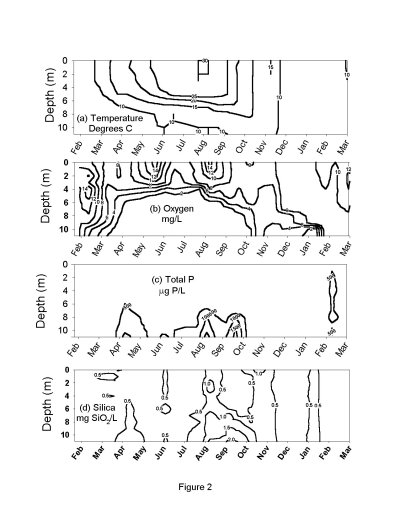

Phosphorus and Silica Recycling in Cougar Lake, a Small Illinois Reservoir
Katherine Brady and Richard B. Brugam
Temperature, oxygen, total phosphorus (TP) and dissolved silica (SiO2) were measured from February 1998 to March 1999 in samples from meter depth intervals at the deepest part (11 m) in Cougar Lake, a eutrophic reservoir in southwestern Illinois to determine if recycling from the sediment is important in controlling photic zone Si:P ratios. An anoxic layer developed between depths of 5m and 12m in summer. Total phosphorus values ranged from 22 mg/L to 1877 mg/L and dissolved silica ranged between 0.02 mg/L to 2.10 mg/L. The highest concentrations of both nutrients were measured in the deep, anoxic water during summer. Although TP levels in the hypolimnion were high in summer, these high concentrations never reached the photic zone. In contrast, high hypolimnetic concentrations of dissolved silica "leaked" into the eplimnion. These results suggest that phosphorus was quickly precipitated from the water column but that silica remained in solution longer. Differences in silica and phosphorus recycling may cause variations in Si:P ratios throughout the year ultimately controlling whether diatoms will be dominant..



This is Figure 2 from our paper. It shows the isopleth graphs for various environmental factors in Cougar Lake. The lake is located on the SIUE campus.